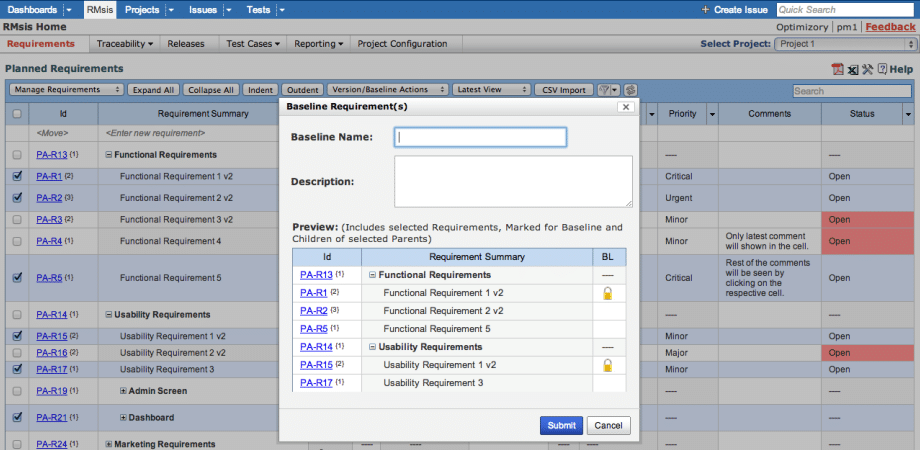

One of the most common reasons for project failure is the scope and requirements creep. About 43% of projects face challenges due to budget overrun or uncontrolled changes to the project’s scope.
Stakeholders changing the scope in the midstream of project development is very common. These changes result in the addition of new requirements for the project. And if the scope of the project changes new requirements might lead to project reschedule and increase in budget. Otherwise, you might face budget overrun or rework.

We understand that changes in projects are inevitable, so is the possibility of scope creep. To combat this challenge, you should focus on authorizing the changes using project tools. By involving stakeholders in scope and requirement baseline activities, you can achieve this. Through stakeholder participation and engagement, you will be able to minimize the adverse impacts of change.
In this article, we will understand the practice of requirement baseline and its importance in project development and project schedule. Now, let's delve into the significance of project tracking tools and Requirement Management.
The foundation of any project development is to have a shared vision. To fulfill this concept requirement baselining is done. Requirement baseline acts as a reference point for reviewed and approved set of requirements for a specific project release. The release could be project schedule for a complete project or an interim development of a product.
The first step towards requirements baselining is to define your requirements. Then, they must be agreed to by all key stakeholders. Once your team establishes requirements baseline, the team should follow a pragmatic change control approach and project tools for adding newly requested features, alteration, or deletion of existing requirements.
Requirement baselining is not just about the change control process. It provides decision-makers with information that lets them make timely and appropriate decisions to modify the planned functionality.

In project management, it is crucial to establish a baseline with clearly defined requirements, precise cost structure, and scheduling estimates, before the stages of project design and execution begin. It keeps the team from diverging, reducing inconsistencies, and enables the team to view the big picture. Here’s how it can benefit your project-
Baselining your requirements before the design phase puts your requirement set under scrutinization. Any changes proposed to your requirements then must go to the configuration control board who will evaluate each change for feasibility, impacts to cost, schedule, and risk. Validate the changes against the baselined scope, and formally approve/reject the change.
Every time a change to the scope of a project occurs, the schedule and cost should be updated. Thus evolving the baseline of a project. Having an agreed requirement baseline helps avoid this frequent hassle.
After measuring the risk and feasibility of a project, it becomes easier to estimate the cost and schedule. Also, by comparing baselines of similar projects, you can effectively improve future project estimation.

An approved Requirement baseline reduces the project review cycle during the verification and validation stage. Because the chances of diverging from the intent of stakeholders minimize, and it pays off by reducing rework and cost overruns.
The foundation of any project development is to have a shared vision. To fulfill this concept, Requirement Management is crucial. Requirement baseline acts as a reference point for reviewed and approved sets of requirements for a specific project release. The release could be for a complete project or an interim development of a product.
The first step towards Requirement Management is to define your requirements and craft a well-structured project management plan. Then, they must be agreed upon by all key stakeholders. Once your team establishes requirements baseline, the team should follow a pragmatic change control approach for adding newly requested features, alteration, or deletion of existing requirements.
Requirement Management is not just about the change control process. It provides decision-makers with information that lets them make timely and appropriate decisions to modify the planned functionality and project management plan and project tracking tools.
RMsis- requirements management for Jira is one such tool that can help you establish and manage baselines to enforce an agreement between multiple stakeholders. You can not just control the changes but also evaluate the impact of these changes. Besides, you can also view all entities associated with a baseline by selecting the target baseline.
To minimize your time and effort, RMsis allows you to reuse baselines and create versions according to your needs.

If you’re looking for a comprehensive requirements management application for Jira, check out RMsis and sign up for a free trial today.